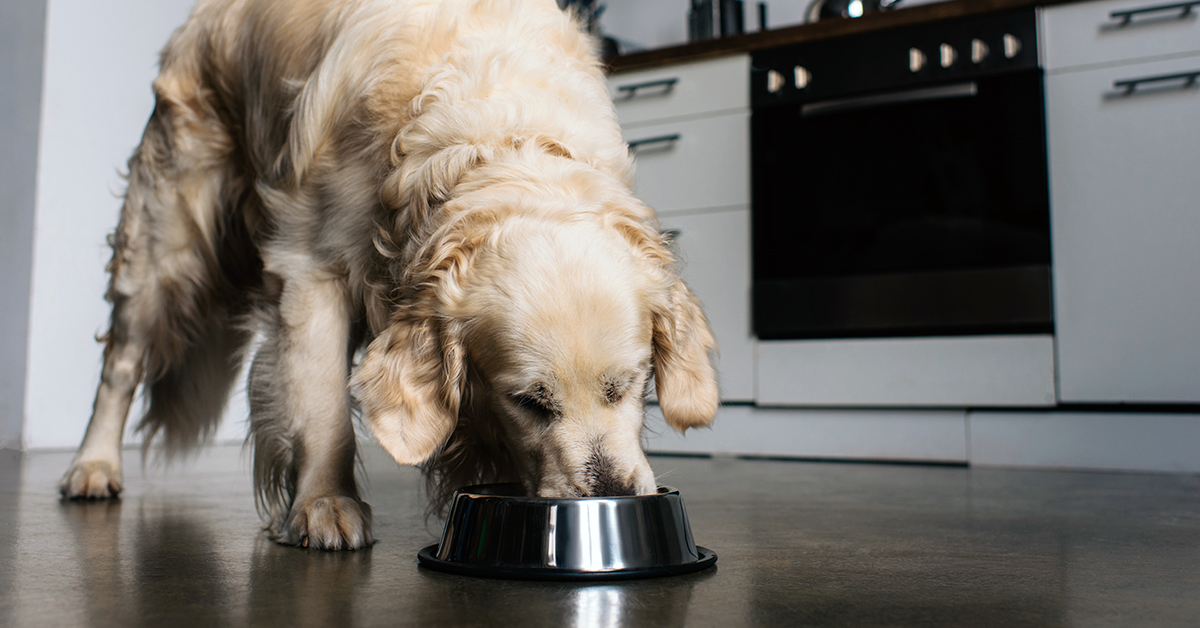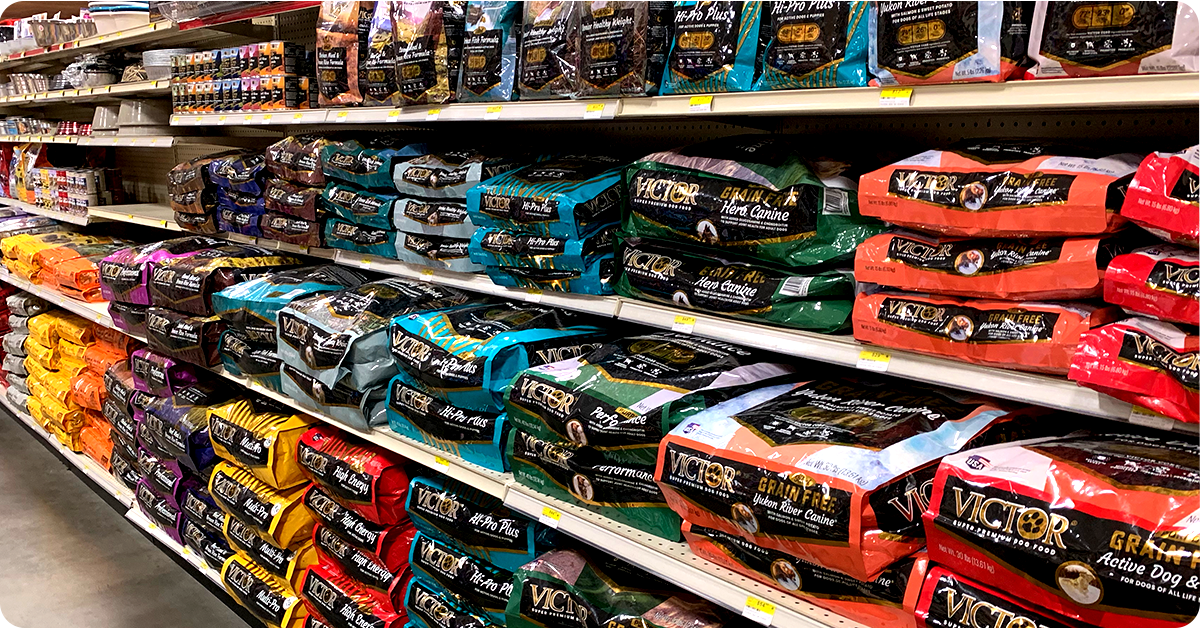
We don’t have to tell you that a dog isn’t just a dog, but a beloved family member and as a part of the family, you only want to feed them the best and most wholesome food. But with so many dog food brands on the market, choosing can be overwhelming. Whether you have a sweet (and naughty) new puppy, an adult rescue or a best buddy who’s getting older, here’s a guide to choosing the right dog food.
As you shop for dog food, there are four primary factors: age, size, activity level, and health concerns. Let’s break it down so you can easily select the best food for your furry family member!
Pet Age
Puppies
As puppies grow, they need more fat, calories and protein than older dogs to become healthy, strong adults. They also need food rich in specific vitamins and minerals to support tissue growth and development. Additionally, puppy food offers ideal nutrition for female dogs who are pregnant or nursing. Many vets recommend switching your female dog to a puppy diet halfway through gestation until the puppies stop nursing.
Adult Dogs
You should feed adult dogs (ages one to twelve depending on breed and size) a maintenance diet to help them sustain healthy weight and energy levels. This food has fewer calories, moderate nutrients and additives that help dogs feel full. Always feed your dog according to the weight chart on the back of the dog food bag, and be aware of any gastrointestinal issues like vomiting, diarrhea and constipation. Otherwise, this should be the easiest stage of your pup’s life regarding diet.
Senior Dogs
Food for senior dogs should focus on preventing and alleviating health concerns that come with age, like arthritis, obesity, gastrointestinal issues and heart disease. Look for food with glucosamine, taurine and omega-3 fatty acids to help support your loyal pup’s immune system so they can age happily and healthily. Dogs reach the senior stage of life at different points based on their size, so a small breed is considered senior when they reach 11-12 years, while medium and large breeds reach seniority around eight to 10 years.

Pet Size
Small Breed Dogs
Dogs that weigh 30 pounds or less are considered small or ‘toy’ breeds. Think Yorkshire terriers, chihuahuas and dachshunds. Small dogs don’t just need smaller pieces of food. They also have higher energy levels and fast rates of metabolism. Small dogs need to eat more often and be given food with a higher concentration of fat and essential nutrients. Always look for food labeled ‘small breed’ or ‘toy breed’ so the kibble will be small enough for your little buddy’s smaller jaws.
Medium Breed Dogs
Medium and mid-sized dogs are the most common and typically weigh between 40-60 pounds. The medium range includes border collies, beagles, basset hounds, Australian shepherds and even miniature huskies. Since they are more common, mid size dogs have less restricted dietary options and can eat food for small or large breeds. When choosing a food for your mid sized pal, always look for whole proteins at the top of the list and limited processed ingredients like MSG, sugar and BHAs.
Large Breed Dogs
Feeding our big furry friends can be tricky since large/giant dog breeds weigh between 70 and 250 pounds. Large breeds include golden retrievers, boxers, pitbull terriers, German shepherds and labrador retrievers, while giant breeds include Newfoundlands, Great Danes, Saint Bernards and Bernese mountain dogs.
A common challenge for larger pups is overfeeding since big dogs grow much faster and can weigh over 100 pounds before they’re even a year old! This fast growth also makes them more susceptible to nutritional deficiencies, so their feeding requires closer monitoring than their smaller counterparts. Large-breed dog food should include optimal amounts of calcium for bone development, glucosamine for healthy joints and fiber and prebiotics for digestion.

Dog Activity Levels
You know all about high energy if you have a border collie, Siberian husky or cattle dog. For pet parents of high-energy pups, there are high-performance dog food formulas geared toward active breeds during their young adult life stage, between ages one and three. High-performance dog foods are formulated with a specific blend of protein and fat to help fuel increased energy levels.
Dog Health Concerns
Certain breeds like the Cavalier King Charles spaniel, German shepherd, Rottweiler and golden retriever are predisposed to genetic medical conditions like hip dysplasia, urinary stones, allergies and heart, intestinal and kidney disease. If you have a breed with congenital health concerns, you can start treating these issues early on with a prescription diet. Veterinary nutritionists specially formulate these to meet the unique needs of our canine friends with specific conditions.
Dog Food Ingredients
As you shop for dog food, thoroughly read the ingredients. Each ingredient must be listed individually, according to AAFCO regulations, and by their common name in descending order by weight. See the AAFCO detailed list of ingredients and what they contain.
When it comes to byproducts in the list of ingredients, they may not be as bad as they sound. According to the American Kennel Club (AKC), byproducts “include parts such as the liver–which is rich in vitamin A–blood, brains, bone, stomach and cleaned intestines. Meat-meal may also contain ingredients considered to be byproducts.” These ingredients may not sound super appealing to us but more often than not, it’s a different story for your dog.
From Our Home to Yours
As family members, our pets deserve the absolute best. Our canine friends come in all shapes, ages and sizes, and your local IFA Country store carries quality food for each and every one of them. Whether it’s Science Diet, Victor, Taste of the Wild or one of our other brands, we offer a range of products to help any dog size, age or activity level. Drop by a store and pick up nutritious, high-performing food that you and your pup will love.
Information provided by Maddie Stephens, Ogden IFA Country Store; Whittney Young, Riverton IFA Country Store; Tycia Ferrall, Richfield IFA Country Store; and Martha Page, Pet Food & Supply Category Manager, IFA.












